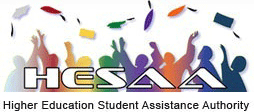More college students are now eligible to get help through the federal Supplemental Nutrition Assistance Program (SNAP). Making students aware of this should be a priority for states and colleges – and anyone in contact with students – according to panelists during a webinar Wednesday. Federal lawmakers in December temporarily expanded SNAP student eligibility rules during the Covid-19 health crisis. Policy analysts from the Center for the Law and Social Policy (CLASP) and experts from California, New Jersey and Massachusetts discussed this expansion and best practices for reaching out to college students about their SNAP eligibility. Prior to this temporary expansion, college students had to jump through some hoops to prove eligibility. "Eligibility rules are overly complicated," said Ashley Burnside with CLASP. Students had to either be participating in federally funded work-study or prove they had a disability or a child under a certain age – or meet one of several other criteria. That was in addition to meeting regular SNAP eligibility requirements. But the 2021 Consolidated Appropriations Act temporarily expands SNAP eligibility to include students who either: - Are eligible to participate in state or federally financed work-study during the regular academic year, as determined by the higher education institution; or
- Have an expected family contribution (EFC) of zero in the current academic year. This includes students who are eligible for a maximum Pell Grant.
The U.S. Education Department and U.S. Department of Agriculture last month issued guidance about these changes, and ED "encourages institutions of higher education to coordinate with campus stakeholders to inform their student population of this benefit during the Covid-19 emergency." College financial aid staff, in particular, "have an incredible opportunity to reach out to students and let them know they may be eligible," Burnside said. A personalized message The best way to reach students is with personalized, conversational messages, said Ruben Canedo, director of strategic equity initiatives at the University of California, Berkeley. "Keep it simple: 'If you need help with groceries, we can help you,'" he suggested. Especially now, getting a message like that is "a breath of fresh air." Data sets validate there's a relationship between basic needs and persistence and completion, he said, but getting assistance has been complicated – and "students aren't being prepared to navigate the system," Canedo said. But now, with the temporary SNAP eligibility expansion, "it's clarified in the most efficient way it's been in a long time," he said. In Massachusetts, there's been a focus on student hunger for a while, according to Patricia Barker, senior policy analyst for the Massachusetts Law Reform Institute. "Colleges are embracing and talking openly about students' basic needs," she said. As the number of food-insecure people has increased during the pandemic, so has the effort to connect college students to resources like SNAP. In January, the Massachusetts Department of Education identified students who were eligible for federal work-study or had an EFC of zero. That amounted to about 94,000 students. The state education department sent personalized letters to all eligible students. The SNAP agency in Massachusetts said they'd accept any student who received that letter. In addition to encouraging students to apply for SNAP, the online application is now more user-friendly, and there is more flexibility for students who may have lost the personalized letter. The SNAP agency has been working to find people who haven't applied, making sure people don't fall through the cracks. To double-down on outreach, "we created a whole bunch of infographics and social media tools that are available for colleges to use," Barker said. Lessening burdens In New Jersey, there's recognition that "tuition and fees is not the whole story. Non-tuition costs are a burden," said David Socolow, executive director for the New Jersey Higher Education Student Assistance Authority. Making college more affordable and meeting non-tuition costs is essential to the overall statewide attainment goal of 65% of all New Jersey adults obtaining a high-quality postsecondary credential by 2025, Socolow said. Prior to the temporary federal SNAP expansion, the state expanded SNAP eligibility for community college students pursuing courses of study in career and technical education. With the federal expansion, almost 40% of college students in New Jersey can now apply for SNAP. Like in Massachusetts, direct, personalized letters were sent to students who are eligible to apply for SNAP. Colleges also were provided with flyers for students — in Spanish and English – with information about how to apply. In addition, the state's human services department, which administers SNAP, added to their SNAP page a tab called "college students," making a point that qualifying college students are eligible. "That's half the battle," Socolow said. Other initiatives There are other initiatives happening in states to ensure basic needs are being met. Massachusetts launched the Hunger-Free Campus Campaign in February, with legislation that would provide more support and resources to two- and four-year colleges and universities to better address food insecurity. In New Jersey, the Hunger-Free Campus Act was passed in 2019. And the Opportunity Meets Innovation Challenge awards grants to help eliminate hunger and food insecurity on college campuses. Nationally, Rep. Jimmy Gomez (D-California) introduced the Enhanced Access to SNAP Act (or EATS Act) to expand SNAP eligibility to millions of college students experiencing hunger. | 
